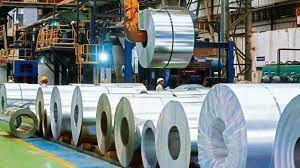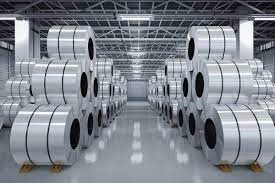Steel is an important component for modern society. There is denying its importance in sustaining and shaping the world we live in. It is ubiquitous from our kitchens to high-rise apartments, automobiles and so on.
It is a high strength and durable material & has wide range of applications in all aspects of life. Many people refer to it as a metal which is wrong. Actually it comprises of mixture of iron ore and traces of carbon—metal and non-metal. Metal alloy is what we call it.

It is tough if we compare to other metal alloys that we see around us. Manufactured with iron, carbon and various other elements, steel is a multi-purpose product. One can find its extensive applications in home appliances, industrial tools, metros, and high-rise building. It is everywhere in our day to day life.
Though it is present everywhere but knowledge about its properties and features is scarce. We will know in the following paragraph what is steel and why it is so vital for our society.
What Is Steel?
There is a misconception amongst lay people that metals and steel is one and the same. Well, it is a wrong notion. They are as different as milk is from cheese.
Back in high school chemistry, most of us must have learned that metals are naturally occurring elements found in the crust of the Earth. If we remember studying periodic table metals have elements like aluminum, tin, zinc, gold, iron, etc, but steel was no there.
It was not listed along with metals because it comprises of combination of iron and carbon. It means major part of its composition is metal (iron) and the minor part is nonmetal (carbon).
Steel has got metallic features because of its composition with iron. And, it has carbon content that ranges between 0.02% and 1.7%. Moreover, these two are mixed together at the time of production.
The alloying elements are added in a specified amount to the iron ore in order to achieve the desired properties like durability and strength. There have been continuous improvements in the techniques of production of steel.
How Steel Is Manufactured?
It goes without saying that steel is mixture of iron and carbon with traces of other elements. However, the process of making steel begins with mining followed by smelting and refining.
Mainly, there are two most popular techniques used in the industry for making steel. We know these techniques by the names, the BOS (Basic Oxygen Furnace) and the EAF (Electric Arc Furnace).
Let’s understand first the BOS process which is a cheap industrial method for making steel. It grew out of the Bessemer process which makes use of raw materials inputs for production of steel.

The process undertakes smelting of iron from its ore in a blast furnace. Afterwards, the reprocessing of the iron takes place through heating. During the heating of the iron, oxygen helps to lower the carbon content. It also reduces impurities in the iron turning into a molten state.
On the other hand, the EAF technique works differently. It is a process which uses recycled scrap steel instead of iron ore. The scrap steel is recycled with the help of high-power electric arcs converting it into molten steel of fine quality.
Noticeably, both the techniques achieve the same result—production of molten steel. After achieving production of molten steel, it undergoes treatment with secondary steel-making processes for getting the desired composition.
The secondary processes involve adding or removing certain elements accompanied by making certain changes in temperature and production setup.
After deciding the final composition of steel, it is time manufacturing of steel takes place in stages to get the finished product. Steel manufacturers use process such as galvanization, coating, cold rolling and heating for achieving the chosen properties and form.
Types of Steel –
There are numerous types of steel which is used in various industrial processes as per requirements. The characteristic feature of steel is its durability and strength.
In the production of steel, the fabrication of different types of steel takes place accomplished by the use of carbon and other alloying elements. Composition of steel depends on the measure of carbon and other elements added to the iron.
Carbon Steel
This type of steel comprises of mixture of iron and traces of carbon, magnesium and silicon. It is said to make up 90% of total steel production. Carbon steel is divided into three categories given below:
Low Carbon Steel
It comprises of 0.3 per cent carbon and is popular for its extensive applications.
Medium Carbon Steel
This type of steel has carbon content between .3% and .6% with traces of magnesium.
High Carbon Steel
It contains over 1.5% carbon and is popular for its strength.
Alloy Steel
This type of steel uses alloying elements such as chromium in different variation along with iron. The alloying elements help us to achieve the desired properties of steel such as strength, durability and versatility. It is inexpensive and finds applications in various industries.
Stainless Steel
We call this type of steel as high grade. It contains low carbon with 10%-20% alloying element chromium. It finds extensive applications in the making kitchenware, home appliances and food processing equipment. This types of steel is ideal for manufacturing medical oxygen plant, gases factory and other industrial machinery.
Tool Steel
It is the type of steel that is hard, resistant and very durable. Alongside of iron, it contains molybdenum, tungsten, cobalt and vanadium in different proportions as per requirements. It is perfect for fabricating metal tools used for cutting and drilling.
Why Do We Use Steel?
In the preceding paragraphs, we discussed what is steel and how it is made. Now the question why do we need to use it is also pertinent.
Typically, our main reason of use of steel is its characteristic properties of durability, strength and versatility. There is no denying the fact steel is the building-block of modern life as we know it.
Above all, it also sustainable since one can easily recycle it to get high quality steel again. Seen in this way, it is a permanent asset for the society.
Moreover, its prices more or less remain constant compared to other commodities.






